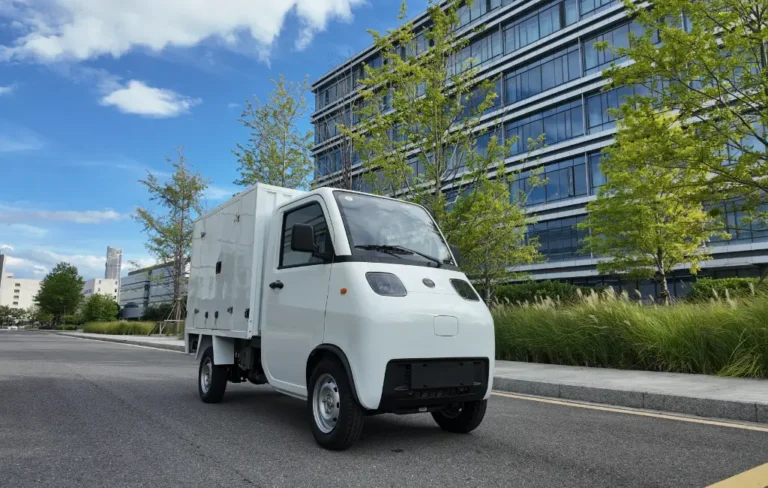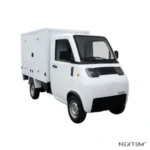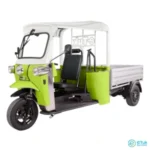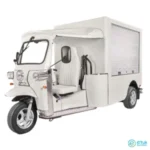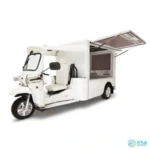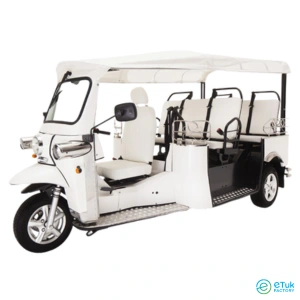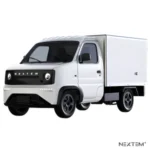L5 Cargo, Vans or Motorbikes and Bicycles? Compare the L5 Cargo with other delivery vehicles and find out which is best for your business.
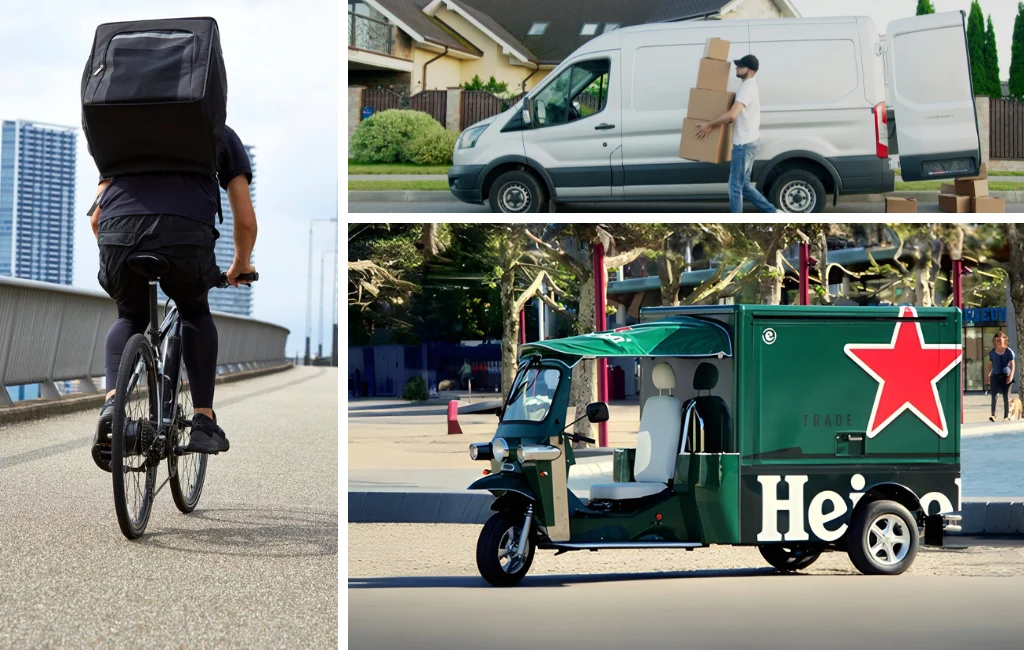
Whether you’re starting out in the last-mile delivery sector or looking for a new transport solution for your company, there are several factors you should consider before investing in a vehicle.
The first step is to analyse your operational needs: what distances do you need to cover? What volumes and weights will you have to transport? The answer to these questions will help you define the most suitable type of vehicle.
Next, it’s essential to evaluate aspects that directly impact the efficiency of the service and the driver’s day-to-day life, such as ease of stopping, driving, and loading/unloading. These elements can make all the difference in demanding urban environments.
Finally, don’t forget to consider customization options, both aesthetic and functional, and the level of comfort and safety offered to the driver. These factors influence not only productivity but also your company’s image.
To help you make an informed and strategic decision, we’ve compared our L5 Cargo with other vehicles widely used for last-mile deliveries, such as vans, motorbikes, and bicycles. Let’s do this?
In a nutshell
L5 Cargo | Vans | Motorcycles & Bicycles | |
| Ease of stopping | X | X | |
| Capacity to transport large volumes | X | X | |
| Ability to travel long distances | X | ||
| Customization options | X | X | X |
| Ease of driving | X | X | |
| Easy loading and unloading | X | X | |
| Driver comfort and safety | X | X |
L5 Cargo vs. Delivery Vans
Despite being widely used in the logistics sector, especially in the last-mile segment, delivery vans have advantages and disadvantages when compared to the 100% electric tuk tuk L5 Cargo.
On the one hand, vans stand out for their ability to travel long distances and transport large volumes and quantities of parcels. However, their size, which is an advantage in terms of load, becomes a limitation in urban environments. The difficulty of stopping or parking in narrow streets with heavy traffic can jeopardize the efficiency of deliveries.
In this context, the L5 Cargo is positioned as an ideal intermediate solution. With a load capacity of up to 800kg, it offers a balance between transported volume and urban agility. Its compact structure allows it to be driven and parked easily in sloping or difficult-to-access areas, where vans face greater restrictions.
What’s more, the L5 Cargo is easy to drive, combining the maneuverability of a motorbike or bicycle with superior load capacity. In contrast, vans, due to their size, can have more limited viewpoints, making it difficult to maneuver in tight places.
Ease of loading and unloading is another decisive factor when choosing the ideal vehicle. The L5 Cargo has three doors, adaptable to the specific needs of each operation, and a low floor height (550 mm), which significantly facilitates the handling of parcels.
Finally, both the L5 Cargo and the vans offer customization options, not only in terms of aesthetics, but also in the configuration of the load box, allowing adaptations for transport in cold or hot conditions, depending on the service’s requirements.
L5 Cargo vs. Motorcycles & Bicycles
Like the L5 Cargo, motorbikes and bicycles adapted for deliveries stand out for their ease of stopping. These vehicles can stop almost anywhere without jeopardizing the flow of traffic, which is a significant advantage in dense urban environments. However, this agility comes with an important limitation: load capacity.
Even with the right adaptations, motorbikes and bicycles can only carry small volumes and light loads, falling well short of the L5 Cargo’s capacity, which can carry up to 800kg of goods. A considerable amount for a compact vehicle.
Another aspect to consider is the ability to tackle longer distances and steep terrain. Bicycles, in particular, require a great deal of physical effort on the part of the driver on steep climbs. The L5 Cargo, on the other hand, is capable of tackling gradients of up to 25%, offering a more robust and efficient solution to this type of challenge.
This physical effort is also related to the level of comfort and safety offered to the driver. The L5 Cargo offers greater protection, with rain covers and a 3-point seat belt, guaranteeing comfort in adverse weather conditions and greater safety in the event of an accident. In contrast, motorbikes and bicycles leave the driver more exposed to risks and inclement weather.
Despite these differences, there are also points in common between the L5 Cargo and the two-wheeled vehicles. All offer good maneuverability, easy driving, customization options, and easy loading and unloading, adapting to different logistical needs.
Conclusion
Whether you’re taking your first steps in the last-mile delivery sector or looking for a more efficient alternative to renew your fleet, choosing the right vehicle can directly influence productivity, operating costs, and customer experience.
If you’re looking to combine ease of stopping, driving, and loading/unloading with high transport capacity, the L5 Cargo electric tuk tuk stands out as a smart and efficient solution. Unlike traditional vans and motorbikes/bicycles adapted for logistics, this vehicle quickly meets the challenges of urban micro-mobility, making it possible to transport a significant amount of goods simply and efficiently.
What’s more, the L5 Cargo offers greater protection from the weather and enhanced safety for the driver, thanks to its rain covers and 3-point seat belt – features that make a difference in day-to-day operations.
If you’re curious, explore all the technical specifications and discover the solutions that the L5 Cargo can offer your business.
You might also like
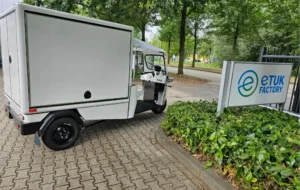
The Flexibility of the L5 Cargo for Different Types of Load
Discover how the L5 Cargo adapts to various types of cargo, offering efficient and sustainable solutions for urban logistics challenges.
Read more
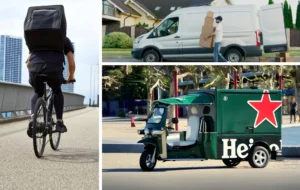
The L5 Cargo Electric Tuk Tuk VS. Other Delivery Vehicles
L5 Cargo, Vans or Motorbikes and Bicycles? Compare the L5 Cargo with other delivery vehicles and find out which is best for your business.
Read more
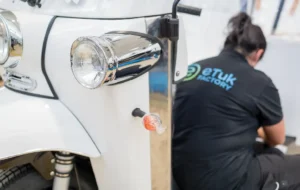
Maintenance tips for Tuk Tuks: Take Care of Your e-Tuk and Avoid Breakdowns
Find out the 4 main maintenance recommendations for your tuk tuk to avoid breakdowns and extend the life of your vehicle.
Read More

